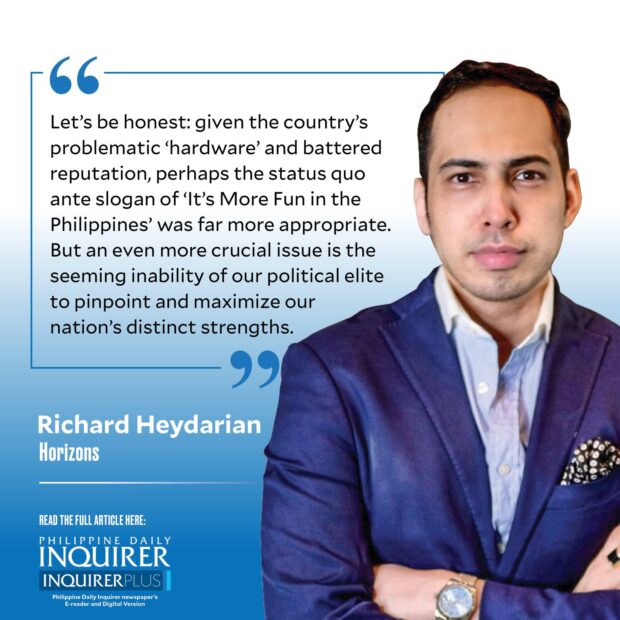
“That’s purely an unintentional mistake because to err is human. We don’t need to react too emotionally,” the Indonesian minister added with a touch of diplomatic niceties, referring to the scenes of Ubud, Bali, featured among a whole host of “stock videos” in the controversial promotional video.
Crucially, the Indonesian minister made it clear that the “Love the Philippines” video was actually featured first abroad, namely at the United Nations World Tourism Organization regional commission meetings in Cambodia (June 15-19), days before garnering widespread public scrutiny upon publication during the 50th-anniversary celebration of the Department of Tourism (DOT) in late-June.
In short, the controversial video already had its own share of “fans” overseas before taking over the national conversation in the Philippines. Clearly, the Indonesian minister didn’t mind having a free (inadvertent) promotion of his beautiful country at the expense of taxpayers in a friendly neighbor.
According to available data, close to $1 million (P49 million) was reportedly spent on just developing the “Love the Philippines” campaign’s skeleton, including the branding’s logo and various studies that went into its production. Meanwhile, as much as P250 million was reportedly allocated for consulting services for the full-fledged rebranding campaign.
In response to public backlash and extremely unfavorable international coverage, the DOT has insisted that its advertising agency partner, DDB Group Philippines, won’t be enjoying the initially allocated fund. Soon, half-a-dozen pro-administration senators publicly backed the embattled DOT leadership, which has insisted on pressing ahead with the “Love the Philippines” campaign.
Nevertheless, skepticism abounds. One insider reportedly told the media that DBB could still get paid for the “materials and activations” it already delivered. Meanwhile, no less than Albay Rep. Joey Salceda, the ultimate data nerd in the legislature, also publicly aired his misgivings.
“I will ask them where is the [focus group discussion], where is the [eminent persons group], and right now after six months where is the UAI, usage, attitude, and image. So basically, we need to have a data-based, and a science-driven accounting for it,” he told the media, emphasizing the need for proper accounting and 21st-century policy-making rigor.
On her part, Sen. Nancy Binay, chair of the Senate committee on tourism, questioned the rationale behind the whole campaign altogether. “The DOT’s enhanced campaign has lost the persuasion game … The campaign has lost its redeeming value and has become unsalvageable. I hope the DOT is level-headed enough to accept this,” she said.
And this, dear reader, brings us to the fundamental issue concerning the DOT’s rebranding efforts.
To begin with, does the whole “Love the Philippines” campaign make sense when it eerily echoes those of Barbados’ and Cyprus’, but minus their modern infrastructure and luxurious on-the-ground experience?
As astute observers such as Binay have noted, the tourism sector is an extremely sensitive market, specifically, to bad publicity and granularities of actual tourism experience.
Across much of the world, they still remember how the Philippines has been the site of one of the worst cases of extrajudicial killings, which have been widely covered by international media in recent years. Meanwhile, Manila has ranked second worst internationally in terms of traffic congestion, while it is Southeast Asia’s third most expensive city. Notorious antics by the former demagogue in Malacañang were clearly amusing to his fanatic base but turned off countless tourists and investors the world over.
Let’s be honest: given the country’s problematic “hardware” and battered reputation, perhaps the status quo ante slogan of “It’s More Fun in the Philippines” was far more appropriate. But an even more crucial issue is the seeming inability of our political elite to pinpoint and maximize our nation’s distinct strengths.
As Indonesia’s tourism chief notes: “[T]he Philippines also has its own unique advantages not found in Indonesia,” likely referring to our incredible mixture of Asian and Iberian heritage, world-renowned hospitality, international language proficiency, and unparalleled ecological diversity. Yes, it’s easy to “love” the Philippines if and when we get the right leadership and good governance that we deserve.
rheydarian@inquirer.com.ph